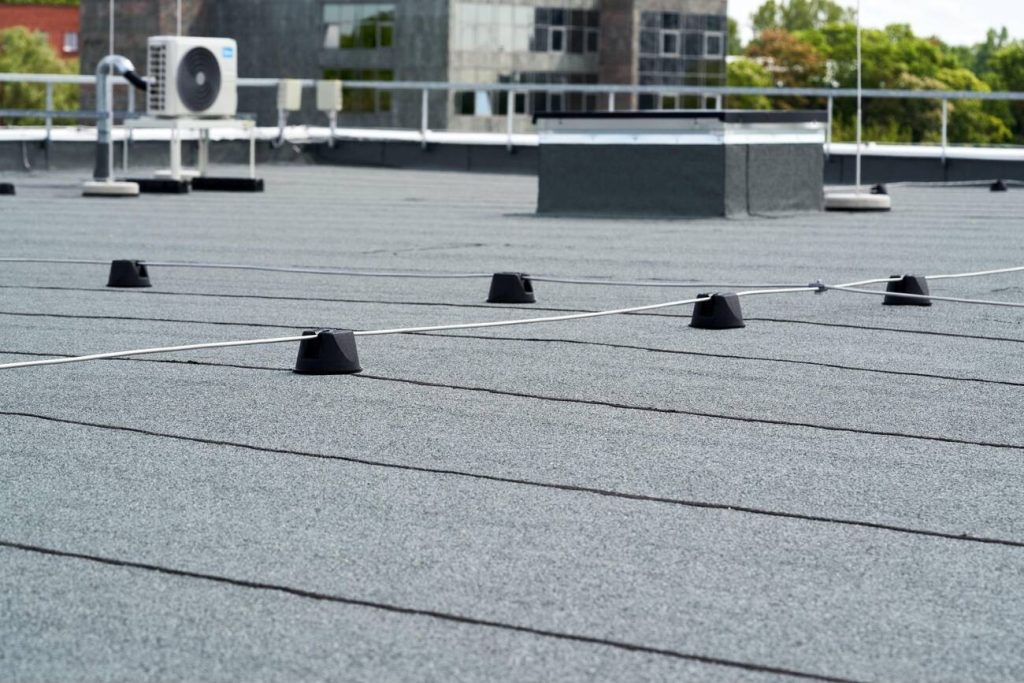Choosing the right flat roofing system for your building is a crucial decision that involves considering several factors such as durability, climate suitability, maintenance requirements, and cost-effectiveness. Unlike pitched roofs, flat roofs require specific materials and construction techniques to ensure longevity and performance. Here’s a comprehensive guide to help you navigate through the process of selecting the ideal flat roofing system for your building.
1. Understand Your Building’s Requirements
Before selecting a flat roofing system, assess your building’s specific requirements. Consider factors such as:
- Building Use: Is it a residential, commercial, or industrial building?
- Foot Traffic: Will the roof be accessed regularly?
- Climate: What is the typical weather like in your area?
- Building Codes: Are there specific local building codes or regulations you need to adhere to?
Understanding these aspects will help determine the type of flat roofing system that best suits your building.
2. Types of Flat Roofing Systems
There are several types of flat roofing systems available, each with its own advantages and considerations:
- Built-Up Roofing (BUR): Consists of multiple layers of bitumen and reinforcing fabrics.
- Modified Bitumen Roofing: Similar to BUR but with added polymers for enhanced flexibility and durability.
- Single-Ply Membrane Roofing: Includes materials like EPDM, TPO, and PVC, which are installed in a single layer.
- Green Roofing: Involves installing vegetation and a growing medium over a waterproof membrane.
- Metal Roofing: Can be used on flat roofs with proper installation techniques.
Each type has unique characteristics regarding installation, lifespan, maintenance, and cost. Consulting with a professional roofer or contractor can help you understand which type aligns best with your building’s needs.
3. Consider Durability and Maintenance
Durability is paramount for flat roofing systems due to their exposure to the elements. Factors such as resistance to UV rays, puncture resistance, and thermal expansion and contraction capabilities are crucial. Additionally, assess the maintenance requirements of each roofing type—some systems may require regular inspections and upkeep to maintain their performance and longevity.
4. Evaluate Cost and Long-Term Value
While upfront costs are important, consider the long-term value of the roofing system. Factors such as installation costs, expected lifespan, energy efficiency (reflectivity), and potential savings on maintenance should be weighed against initial expenses. Some roofing systems, though more costly initially, may offer substantial savings over their lifespan due to reduced maintenance and energy costs.
5. Consult with Roofing Professionals
Engage with reputable roofing contractors or consultants who specialize in flat roofing systems. They can provide valuable insights, conduct thorough inspections, and offer recommendations based on your building’s specific requirements. A professional assessment will ensure that the chosen roofing system meets all safety, performance, and regulatory standards.
6. Climate Considerations
Climate plays a significant role in determining the appropriate flat roofing system. For instance, regions with extreme temperature variations may require roofing materials with high thermal resistance. Areas prone to heavy rainfall or snowfall may benefit from systems with excellent waterproofing capabilities and efficient drainage solutions.
7. Review Warranty and Support
Review the warranty offered by manufacturers and contractors for the roofing materials and installation. A comprehensive warranty provides peace of mind and ensures that you have recourse in case of unexpected issues or defects.
Conclusion
Choosing the right flat roofing system involves careful consideration of various factors, including durability, maintenance, cost-effectiveness, and climate suitability. By understanding your building’s specific requirements and consulting with roofing professionals, you can make an informed decision that ensures long-lasting performance and protection for your property. Take the time to research and evaluate different options to find the flat roofing system that best meets your needs and budget.

